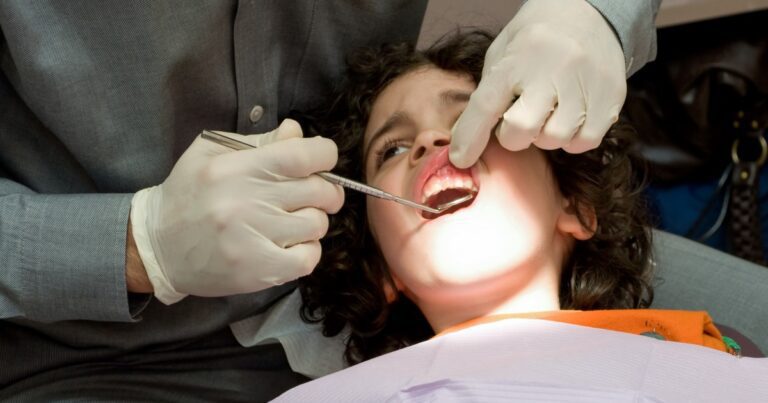There’s a quick and easy way to prevent 80 percent of tooth decay, but most kids don’t get it, federal health officials said Tuesday.
The treatment, dental sealants, works well, but only 60 percent of children who need sealants get them, says the Centers for Disease Control and Prevention.
A good solution: do it at school. But states often lack the funding to pay for such programs, and often bureaucratic requirements about having dentists on site can hinder them, too, the CDC said.
“Many children with untreated tooth decay will have difficulty eating, speaking and learning,” said CDC Director Dr. Tom Frieden.
“Dental sealants can be an effective and inexpensive way to prevent tooth decay, yet only one in three low-income children currently receive them. School-based sealant programs are an effective way to get sealants to children.”
The CDC says 20 percent of children and teens have untreated tooth decay by age 19. Children with constant toothaches cannot eat properly and have trouble paying attention in school.
Related: Do children need dental sealants?
Even though they are approved by the CDC and the American Dental Associationonly 43 percent of children ages 6 to 11 have dental sealants, federal surveys show.
“Low-income children were 20 percent less likely to have sealants than higher-income children,” Susan Griffin and colleagues at the CDC wrote in a report released Tuesday.
“Low-income children were 20 percent less likely to have sealants than higher-income children.”
“School-age children without sealants have nearly three times as many cavities as children with sealants,” the CDC added.
“Applying sealants in school-based programs to the nearly 7 million low-income children who don’t have them could save up to $300 million in dental treatment costs.”
This is because a filling costs more. Furthermore, once a tooth has been drilled to place a filling, it is never as stable again.
But many states struggle to pay for such programs, the CDC team found.
“Federal funding of state oral health programs is highly competitive and varies widely by state,” they wrote. “Many state and local school-based sealant programs cover a portion of their costs by billing Medicaid.”
And Medicaid, the joint state-federal health insurance plan for children and low-income people, is already badly stretched in most states.
One big cost is paying a dentist to oversee the program, the CDC found. One solution: Allow lower-paid professionals to manage waterproofing programs. At least one state has already done so.
“For example, in South Carolina, school sealant programs managed and staffed by dental hygienists deliver sealants to approximately 40 percent of high-need schools,” Griffin and colleagues wrote.
“CDC currently provides funding to 21 state public health agencies coordinate and implement school-based and school-based sealant programs targeting low-income children and those living in rural areas,” the agency added.
He said the federal government plans to do more. It would classify pediatric dental services as an essential health benefit to be covered by dental insurance as part of the Affordable Care Act, for example, and match state Medicaid and CHIP costs for sealants.
Sealants are plastic-based coatings that get into the cracks and crevices of molar teeth, preventing food and bacteria from starting the chemical reaction that leads to tooth decay.
Studies show they are safe and stop tooth decay, even when layered over an existing cavity.
“Studies of sealant effectiveness indicate that sealants administered in clinical or school settings prevent about 81 percent of decay at two years after placement, 50 percent at four years, and can continue to be effective for up to nine years until adolescence,” the CDC said. .
“Seals delivered to clinical or school settings prevent about 81 percent of decay two years after placement.”
The American Dental Association (ADA) agrees and says many people don’t know that dental insurance often pays for them.
“Dental sealants are one-third the cost of a filling, so their use can save patients, families and states money,” the Pew Charitable Trusts, an independent public service-oriented nonprofit, said in a statement. “School-based sealant programs are the optimal way to reach children—especially low-income children who have trouble accessing dental care.”
One concern parents may have is about BPA, a chemical found in sealants that is increasingly linked to health risks. The ADA says the benefits of sealants far outweigh any risks.
“The potential amount of BPA patients could be exposed to when they receive sealants is minimal and is less than the amount a person receives from breathing air or handling a receipt,” says the ADA.


